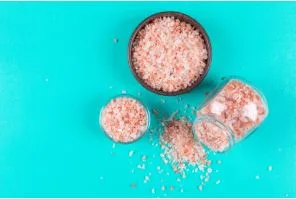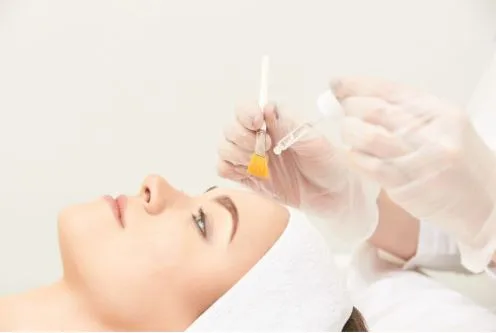Is Pink Himalayan Salt Really Better for You? All You Need to Know
If you’ve ever wondered is pink Himalayan salt healthy, you’re not alone. This rosy-hued rock salt has become a wellness favorite but is it truly better than regular salt? In this article, we’ll break down what it is made of, it’s possible benefits, what science says, and how to use it safely. Let’s explore whether its pink reputation holds up.
What Is Pink Himalayan Salt and Where Does It Come From?
Pink Himalayan salt is mined from the Khewra Salt Mine in Pakistan, one of the world’s oldest and largest salt deposits. It gets its signature color from trace minerals like iron, magnesium, potassium, and calcium, which make up around 1–4 percent of its content, while roughly 96–99 percent is sodium chloride. It undergoes minimal processing with no additives and is often appreciated for its natural appearance.
Nutritional Comparison: Pink Salt vs Table Salt
The main difference between pink Himalayan salt and regular table salt is the extra minerals and lack of additives. However, both contain comparable amounts of sodium chloride. One teaspoon of pink salt provides about 1,680 mg of sodium compared to around 2,360 mg in iodized table salt.
A key distinction is that pink salt usually does not contain iodine unless fortified. That brings us to a common question: does pink salt have iodine? The answer is no, unless the salt is labeled iodized, it won’t provide the iodine needed for thyroid health.
Health Benefits Of Pink Himalayan Salt : Real or Hype?
Some of the most common claims about pink Himalayan salt include better hydration, improved sleep, detox support, and added minerals. Let’s examine these:
- Trace Minerals: While pink salt contains up to 84 minerals, the amounts are tiny. You would need to consume more than three kilos of pink salt daily to meaningfully increase calcium intake. Clearly unrealistic.
- Hydration Support: A few studies suggest sodium, potassium, and magnesium help maintain fluid balance. However, this benefit comes from regular sodium and water, not unique to pink salt.
- Salt Lamps and Detox: Pink salt lamps are marketed for releasing negative ions. But scientific evidence does not support these claims. Salt alone does not purify the air or detox your body.
Health Risks and Limitations
While pink salt can safely be part of your diet, there are downsides:
- Excess Sodium: It’s still mostly sodium chloride. The American Heart Association recommends no more than 2,300 mg daily, ideally closer to 1,500 mg for many adults.
- No Iodine: Because it lacks iodine, it isn’t suitable as your only salt. Iodine is vital for thyroid hormone production and neurological development in children.
- Heavy Metals: Some analyses found low levels of lead in pink Himalayan salt. While below hazardous thresholds, it’s still wise to choose products from reputable suppliers.
Who Might Benefit from Pink Salt?
- Those avoiding additives: If you want salt without anti-caking agents, pink salt may appeal.
- Clean-eating enthusiasts: Pink salt is popular among those following holistic or minimally processed diets.
- Visual and culinary appeal: Its attractive color and coarse texture add flair to dishes, salts grinders, or Himalayan salt blocks.
That said, health professionals generally agree that unless you’re filling a decorative tray or cooking visually or texturally-special dishes, pink salt is not a nutritional upgrade.
How to Use Pink Himalayan Salt Safely and Smartly
- Use it in moderation: Treat it as a seasoning, not a supplement.
- Combine with iodized salt or iodine-rich food: Ensure your iodine needs are met.
- Buy from reputable suppliers: Brands like Sobaan Salt company provide traceability and quality control, ensuring your salt meets food-grade standards.
Is Pink Himalayan Salt Healthy? Final Verdict
The bottom line is this: is pink Himalayan salt healthy? It has similar nutritional value to table salt but offers no proven health advantages. While free from additives and offering a pleasant flavor and aesthetic, it doesn’t outperform iodized salt in terms of nutrition or health.
Use it as a culinary choice, not as a health supplement. And always remember that moderation matters most.
Quick Summary
| Feature | Pink Himalayan Salt | Iodized Table Salt |
| Sodium Chloride | ~98% | ~98% |
| Trace Minerals | Up to 84 in very small amounts | Minimal |
| Iodine Content | None unless added | Typically present |
| Processing | Minimal | Highly refined with additives |
| Health Claims | Taste, texture, visual appeal | Nutrient fortification (iodine) |
Science Notes and Research
Academic and medical reviews such as those from Healthline, Verywell Health, and Medical News Today all report that pink salt’s health halo is largely unsubstantiated. At best it matches regular salt in sodium content and slightly differs in trace mineral content, hardly a health advantage unless used with intention and restraint.
Final Thoughts
Pink salt makes food look and feel special, but health-wise it is not a game-changer. If you prefer minimal additives and love the pink crunch, go ahead and enjoy it. Just keep it modest, always pair it with iodine sources, and trust reputable brands like Sobaan Salt company to ensure quality and purity.






